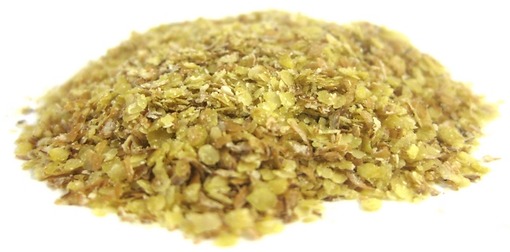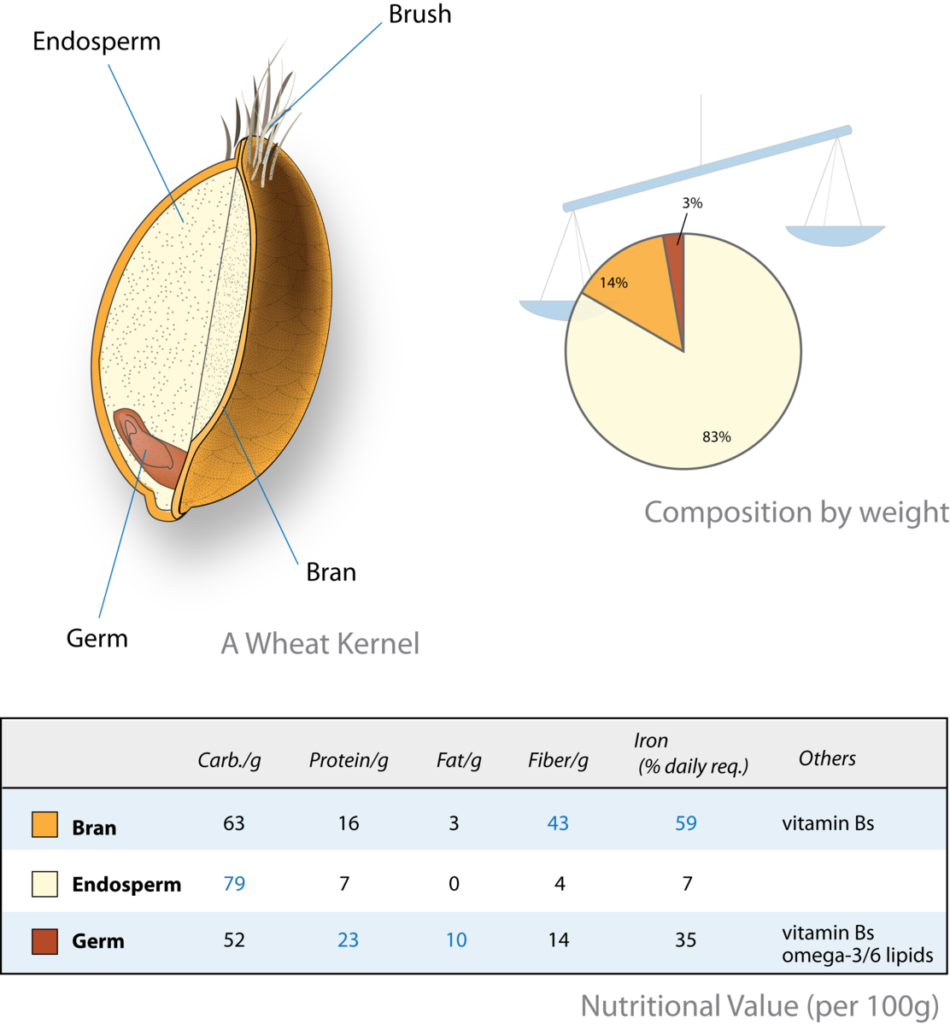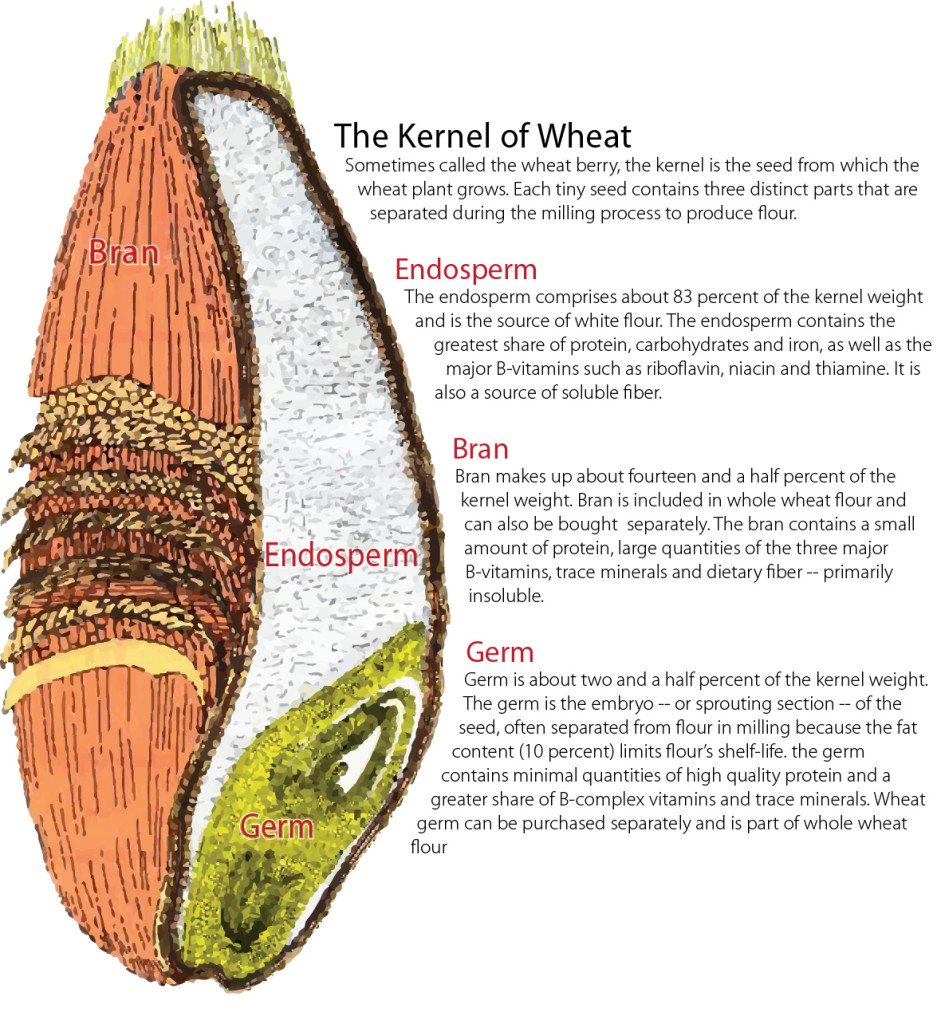What is wheat germ?
Wheat germ is the embryo part of the wheat kernel or seed. It has all the vital nutrients to produce a sprout of wheat. If you soak a wheat kernel in water and keep it moist, a sprout will emerge at the germ. This “germ” has a high concentration of nutrients to support growth. That’s why it’s good for you. When wheat kernels are milled into flour, the wheat germ is easily separated from the other parts of the flour. In this form, it’s called the raw wheat germ. It’s light-colored and flakey. When toasted, it becomes a golden brown color with a crunchy nutty flavor. Some people prefer the taste of the toasted wheatgerm.
Nutritional breakdown of wheatgerm
Wheat germ — toasted and untoasted — has a high concentration of folic acid, which is a necessary nutrient for all pregnant women to prevent neural-tube defects. It also contains small amounts of B vitamins, vitamin E, magnesium, iron, phosphorus, potassium, and zinc. But don’t forget the protein and fiber in wheat germ. According to the USDA Nutrient Data Lab, the nutrients for toasted and untoasted wheat germ are about the same.
2 tablespoons of Toasted Wheat Germ provide approximately:
| Name | Amount | Unit | % DV |
|---|---|---|---|
| Energy | 60 | kcal | |
| Protein | 4 | g | |
| Total lipid (polyunsaturated) | 1 | g | 2% |
| Carbohydrate | 8 | g | 3% |
| Fiber, total dietary | 2 | g | 8% |
| Sugars | 0 | g | |
| Calcium, Ca | 10 | mg | |
| Iron, Fe | 0.9 | mg | 6% |
| Magnesium, Mg | 35 | mg | 8% |
| Phosphorus, P | 130 | mg | 10% |
| Sodium, Na | 0 | mg | |
| Zinc, Zn | 1.8 | mg | 8% |
| Vitamin C, total ascorbic acid | 0 | mg | |
| Thiamin | 0.3 | mg | 20% |
| Folate, total | 80 | µg | 20% |
| Vitamin A, mcg | 130 | mcg | |
| Vitamin E | 2.8 | mg | |
| Potassium | 130 | mg | |
| Cholesterol | 0 | mg |
2 Tablespoons of Raw Wheat Germ provide approximately:
| Name | Amount | Unit | % DV |
|---|---|---|---|
| Energy | 45 | kcal | |
| Protein | 3 | g | |
| Total lipid (fat) | 1 | g | 2% |
| Carbohydrate | 5 | g | 2% |
| Fiber, total dietary | 2 | g | 8% |
| Sugars, total including NLEA | 2 | g | |
| Calcium, Ca | 0 | mg | |
| Iron, Fe | 0.721 | mg | 4% |
| Magnesium, Mg | 32 | mg | 8% |
| Phosphorus, P | 80 | mg | 8% |
| Sodium, Na | 0 | mg | |
| Zinc, Zn | 1.2 | mg | 8% |
| Vitamin C, total ascorbic acid | 0 | mg | |
| Thiamin | 0.11 | mg | 10% |
| Folate, total | 40 | µg | 10% |
| Vitamin A, IU | 0 | IU | |
| Fatty acids, total saturated | 0 | g | |
| Fatty acids, total trans | 0 | g | |
| Cholesterol | 0 | mg |
Source: Bob’s Red Mill raw wheat germ
Uses for wheatgerm
Storing wheatgerm



